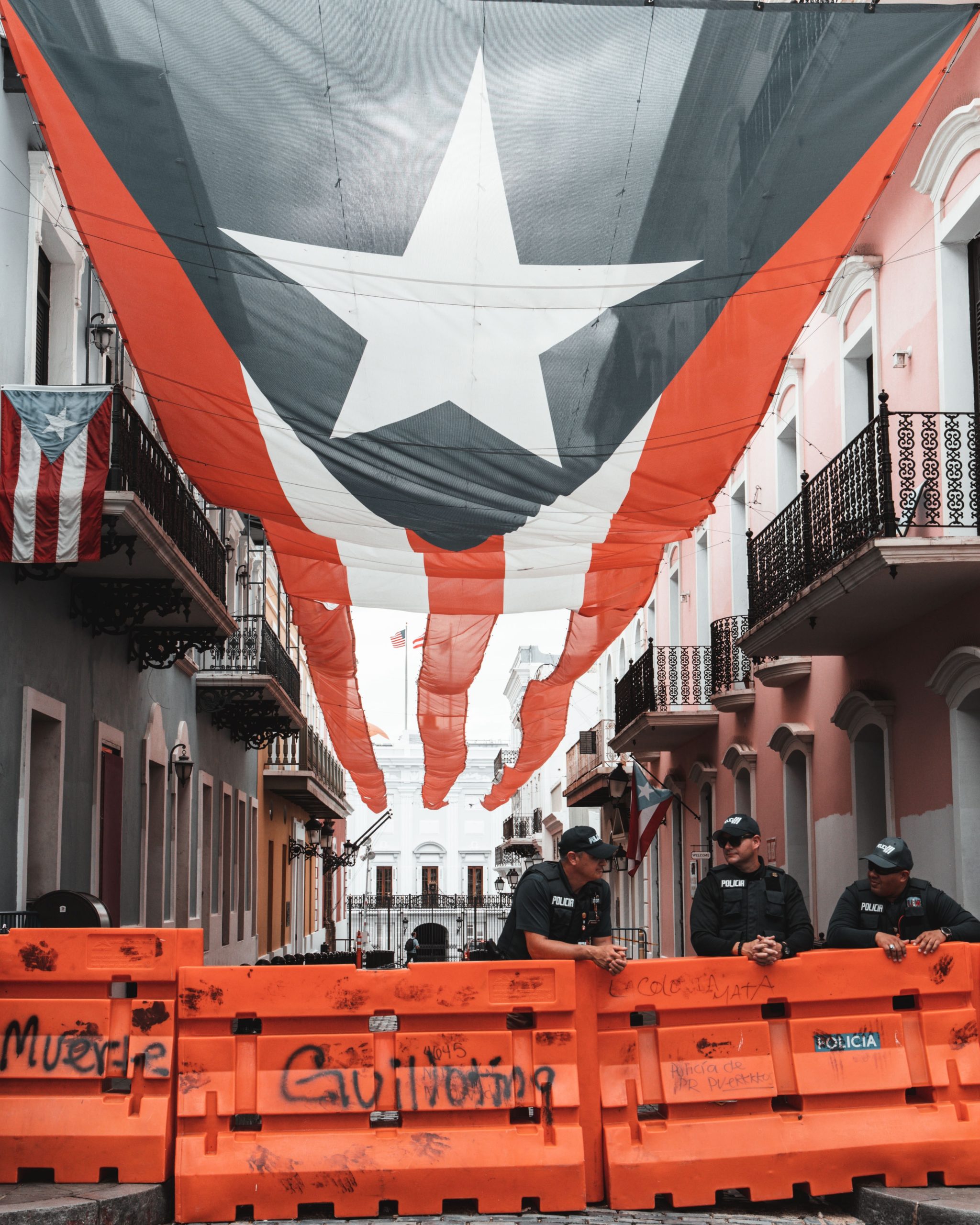“I was born there and I can’t go in there. Because we’re black and poor they’re abusing us, you know? And it isn’t fair to be displaced by economic interests.” Jorge Luis González, Puerto Rican resident of San Juan
In Aquí Vive Gente, Puerto Rican artist Bad Bunny joins journalist Bianca Graulau to highlight the displacement of immigrants and people in poorer neighbourhoods by a second group of immigrants: the super-wealthy.
In 2020, Bad Bunny was Spotify’s most streamed artist. He repeated this feat in 2021 and in 2022 he had the biggest streaming year for any artist on the platform. If you have never heard of him, it’s probably because he achieved all this while singing in Spanish.
The reggaeton singer has used his star power to promote political causes in his native Puerto Rico and beyond, which is an example of the strong links between music and social movements found by academics.
For his latest musical hit, El Apagon, Bad Bunny produced a 23 minute video documentary about social problems in Puerto Rico. At around 3:50 the song introduces the main topic for the rest of the video. The lyrics change to: I don’t want to leave (yo no me quiero ir de aquí), they should be the ones leaving (que se vayan ellos), they take what belongs to me (lo que me pertenece se lo quedan ellos), this is my beach, this is my sun (esta es mi playa, este es mi sol), this is my land, this is me (esta es mi tierra, esta soy yo). At which point, journalist Bianca Graulau takes over and introduces the documentary. Turn on the closed captions from 4.30 onwards to watch the documentary with English subtitles.
Aquí Vive Gente (People Live Here) explores the two types of immigration experienced by Puerto Rico. First, there are long-term migrants from the neighbouring Dominican Republic, who moved to Puerto Rico for economic reasons and tend to live in rental accommodation in the capital’s poorer neighbourhoods. They are well-integrated into the community and live in harmony with other residents.
Second, are wealthy American businessmen who moved to the island to take advantage of a government programme that excludes them from paying taxes, while residing on the island. These types of incentives are available in other locations. Move to Monaco, Jersey, The UAE and you will hardly pay any taxes. In the case of Puerto Rico the tax incentives are exclusively for foreign investors. Act 22, Ley para Incentivar el Traslado de Inversionistas a Puerto Rico (Act to Promote Relocation of Investors to Puerto Rico) means foreign investors will pay almost no capital gains tax on things such as stocks, cryptocurrency, or real estate.
Much of the wealthy immigrants’ investments are in properties in poor neighbourhoods, which displace tenants who had been renting the properties for decades. Rents are then hiked up way above the average Puerto Rican salary or properties are sold on for enormous profits, well out of reach for locals from the area. These properties go on to become summer houses and rental accommodation for tourists.
Among the most famous businessmen to move to Puerto Rico for tax reasons are YouTuber Paul Logan, who moved to a $13 million mansion on the island in 2021, and Brock Pierce, cryptocurrency investor and former actor.
The documentary also shows many of the arguments used in favour of the businessmen. In an interview with Rafáel Hernañdez Montanez, President of Puerto Rico’s House of Representatives, he claims that complaints against the new millionaire residents are based on racism. While a local businessman suggests that without the millionaires the island will become a ghetto.
Countries around the world use incentives to attract millionaires with the hope of benefiting from their investments, but little consideration is given to those who are affected negatively by the migration of the rich. It remains to be seen whether being brought to the spotlight by a global super star will make any difference to the situation in Puerto Rico.
